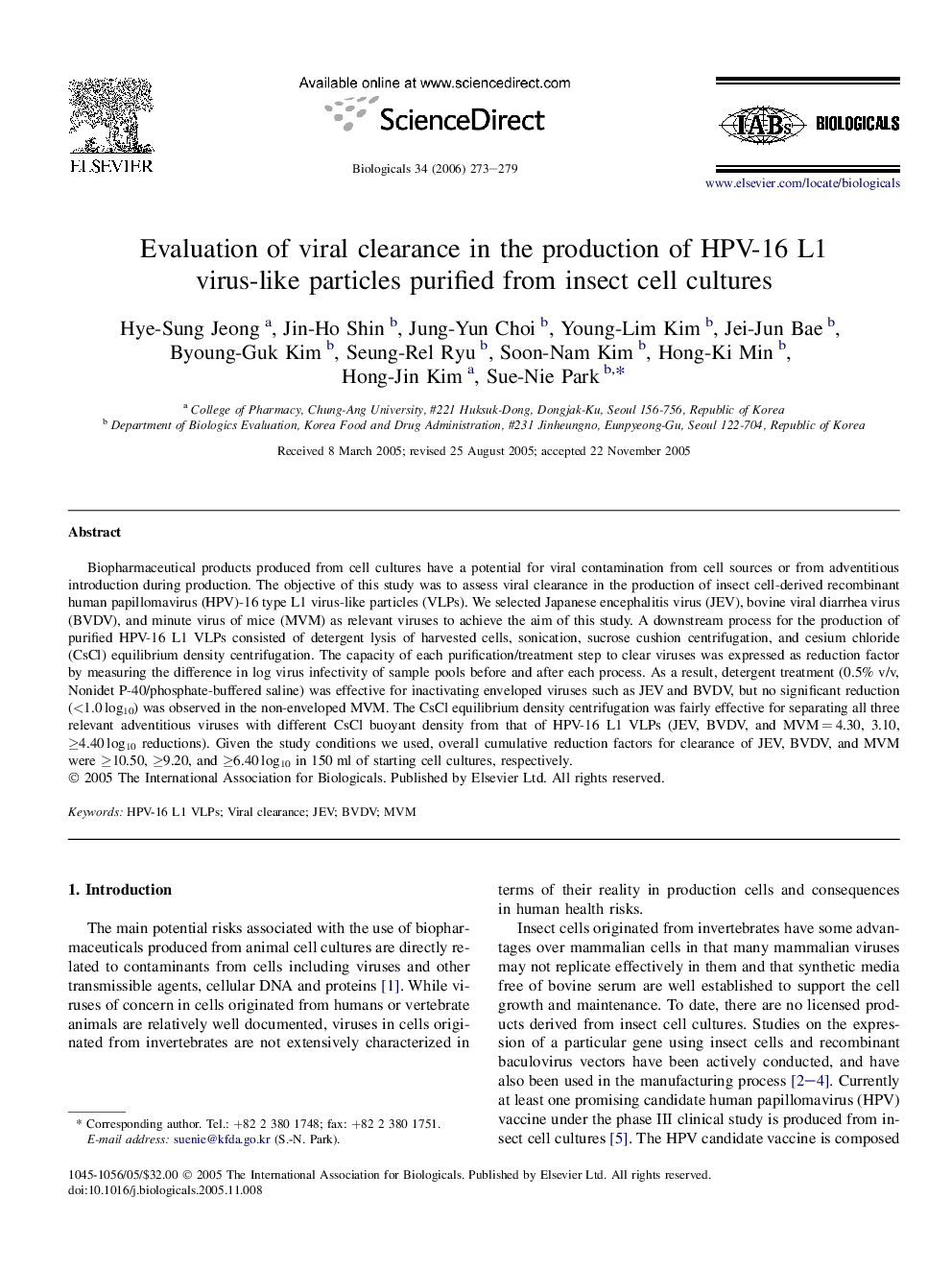| Article ID | Journal | Published Year | Pages | File Type |
|---|---|---|---|---|
| 2034623 | Biologicals | 2006 | 7 Pages |
Biopharmaceutical products produced from cell cultures have a potential for viral contamination from cell sources or from adventitious introduction during production. The objective of this study was to assess viral clearance in the production of insect cell-derived recombinant human papillomavirus (HPV)-16 type L1 virus-like particles (VLPs). We selected Japanese encephalitis virus (JEV), bovine viral diarrhea virus (BVDV), and minute virus of mice (MVM) as relevant viruses to achieve the aim of this study. A downstream process for the production of purified HPV-16 L1 VLPs consisted of detergent lysis of harvested cells, sonication, sucrose cushion centrifugation, and cesium chloride (CsCl) equilibrium density centrifugation. The capacity of each purification/treatment step to clear viruses was expressed as reduction factor by measuring the difference in log virus infectivity of sample pools before and after each process. As a result, detergent treatment (0.5% v/v, Nonidet P-40/phosphate-buffered saline) was effective for inactivating enveloped viruses such as JEV and BVDV, but no significant reduction (<1.0 log10) was observed in the non-enveloped MVM. The CsCl equilibrium density centrifugation was fairly effective for separating all three relevant adventitious viruses with different CsCl buoyant density from that of HPV-16 L1 VLPs (JEV, BVDV, and MVM = 4.30, 3.10, ≥4.40 log10 reductions). Given the study conditions we used, overall cumulative reduction factors for clearance of JEV, BVDV, and MVM were ≥10.50, ≥9.20, and ≥6.40 log10 in 150 ml of starting cell cultures, respectively.
